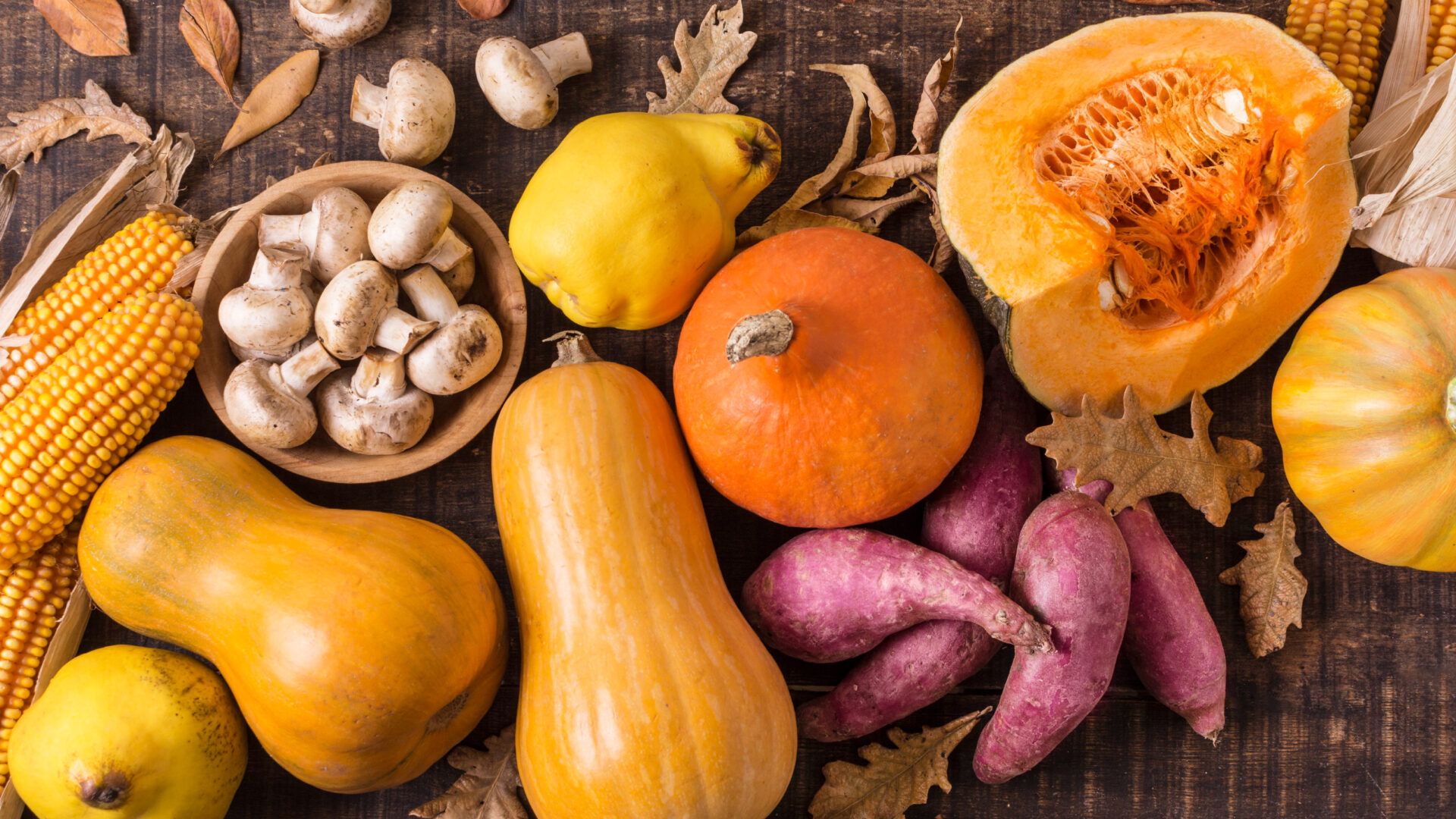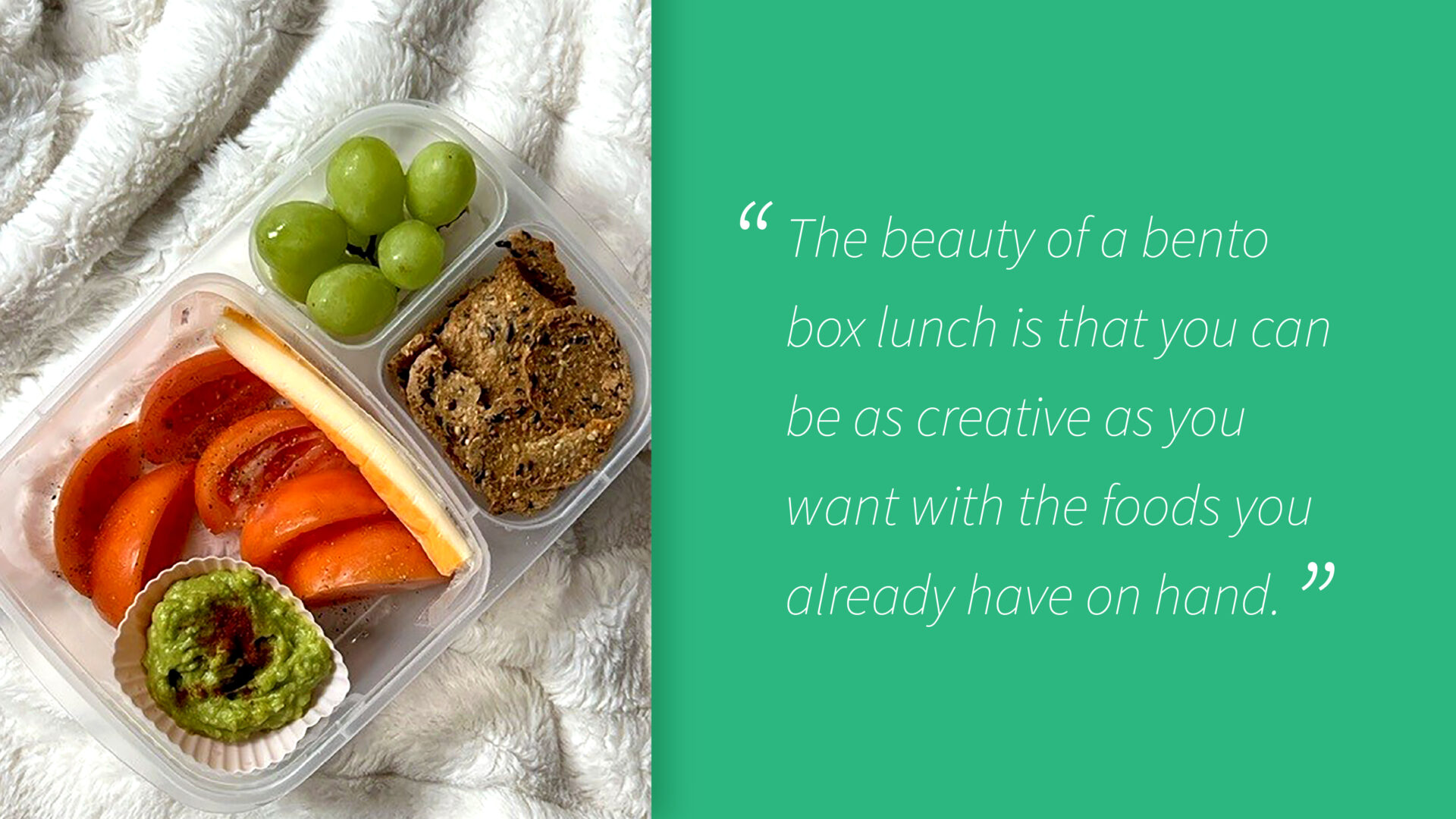Fall time often brings a season of change as we say goodbye to warm weather and long days, and say hello to the return of cooler temperatures, back-to-school routines, and hearty, comforting meals.

When planning your grocery lists and meal preps, it is a good idea to incorporate seasonal foods whenever possible. This encourages you and your family to consider a wider variety of foods, and it is also much more cost efficient as seasonal foods are more readily available and in abundance.
Here are some tips and recommendations from Rebecca Liang, registered dietitian (RD), at Oak Valley Health:
1. Let seasonal foods guide your meal prep.
In the fall, some of the best foods to consider are: apples, pumpkins, and root vegetables. Applesauce and pumpkin puree also provide fiber, vitamins and minerals, pair well with carbohydrates, and their versatility make them great for baking with and a low-fat substitute to use in place of butter or oil. Bonus: plan a fun fall activity with friends or family and head out to the orchard or patch and pick your own apples or pumpkins! Recipe idea Rebecca recommends: Hearty chai spice apple crumble
2. Boost your immunity with key vitamins A, C, and D.
Vitamin A stimulates the production and activity of white blood cells and maintains your epithelial tissues and mucous membranes – all which play a role in protecting your body against pathogens. Vitamin A can be sourced from eggs, dairy, liver, fish, leafy green vegetables, and orange and yellow fruits and vegetables such as carrots, sweet potatoes, tomatoes, and mangoes. Vitamin C can help speed recovery from the common cold and can be received from whole fruits and vegetables, with the added benefit of fiber to support a healthy gut.
Vitamin D helps with keeping your immune system strong, and also supports mental wellness. The best source of vitamin D comes from natural sunlight and direct exposure to your skin, but since most Canadians do not get enough vitamin D especially during the winter months, it is best to speak to your dietitian or family doctor about vitamin D supplementation. However, vitamin D can also be found in food sources such as egg yolks, some fatty fish such as salmon, and fish with soft, edible bones like sardines.

3. Prioritize protein for brain health.
Protein-rich foods help with neurotransmission in the brain, which directly impacts memory and learning, and is especially helpful as kids return to school. Some options include lean meat, poultry, fish, eggs, and milk. Plant-based alternatives include nuts, seeds, legumes such as edamame, and non-dairy milks that are fortified with vitamin D and calcium. Recipe idea Rebecca recommends: The best white bean soup
4. Choose simple, add variety.
During this busy time of year, it is often helpful to prepare one pot meals, sheet pan dinners, crockpot recipes, and other time-saving meal solutions that can still provide a whole, balanced meal. Protein, vegetables, healthy fat, whole grains, and lots of flavourful seasonings are all you need for these one pot or pan meals, and the best part is there is minimal clean up involved. Bento boxes are also a great lunch idea for kids and adults alike.
Rebecca says: “The beauty of a bento box lunch is that you can be as creative as you want with the foods you already have on hand. There are endless combinations!”

“This is a great example of a balanced bento box. We’ve got seedy crackers for our source of complex carbohydrates, spicy guacamole to add a boost of healthy fats, string cheese for our lean source of protein, and sliced tomatoes and green grapes for a variety of vitamins and minerals. The best part: I already had these items in my home!”
5. Pair movement with your healthy diet.
Health practitioners recommend making time for daily activity in addition to making healthy food choices. Get creative, find opportunities to move, and make it a family affair. Even 15 mins of walking after dinner to wind down and help with digestion can make a difference.
Rebecca Liang is a registered dietitian at Oak Valley Health. She works in the paediatric lifestyle clinic to help paediatric patients and their families make healthy lifestyle changes to encourage overall wellness.

Subscribe
This article appeared in the September 2023 issue of The Link. To receive Oak Valley Health’s community newsletter, subscribe now.
